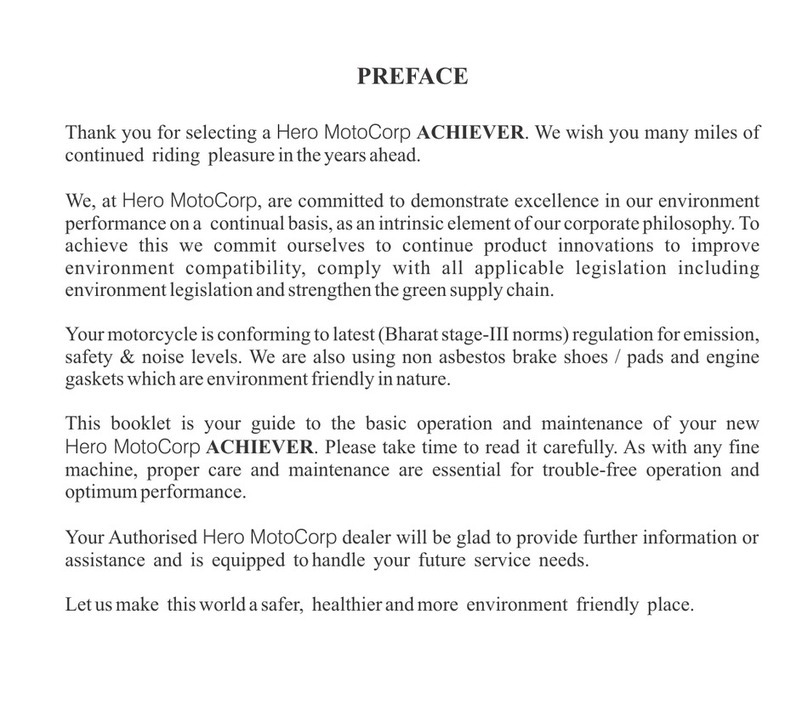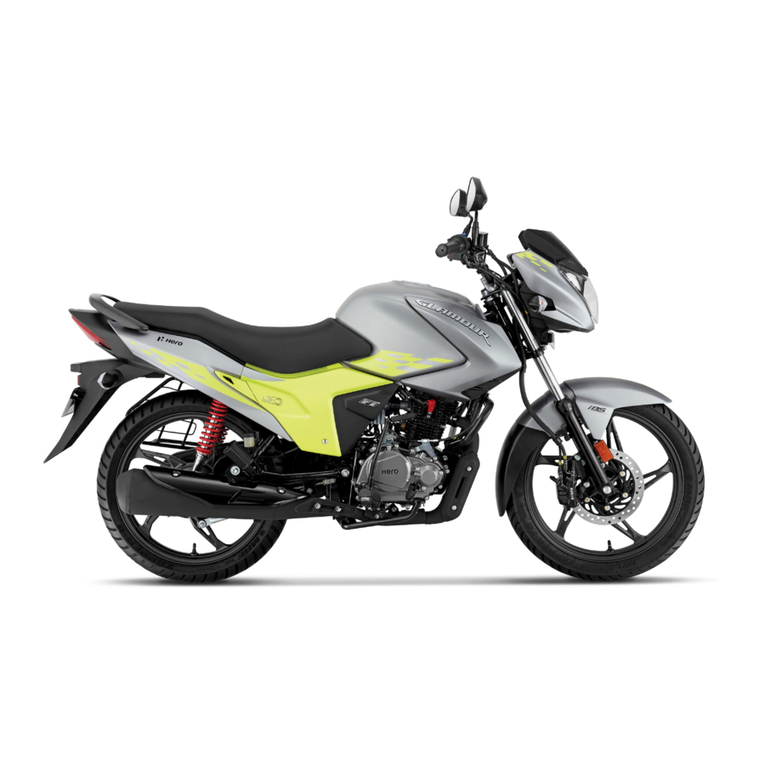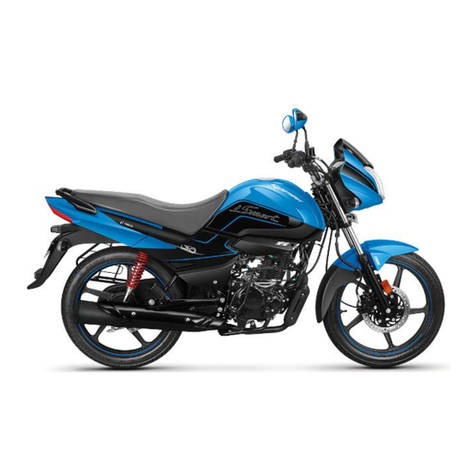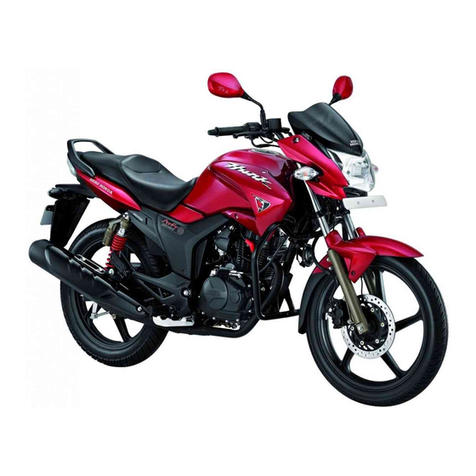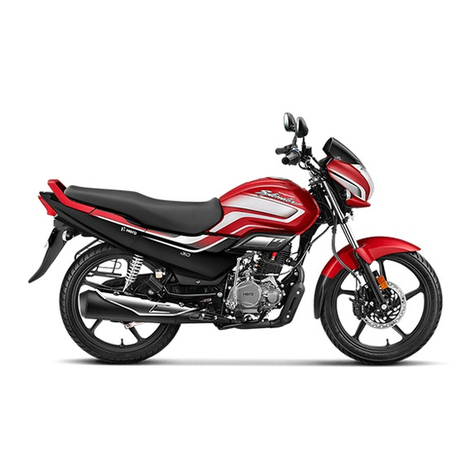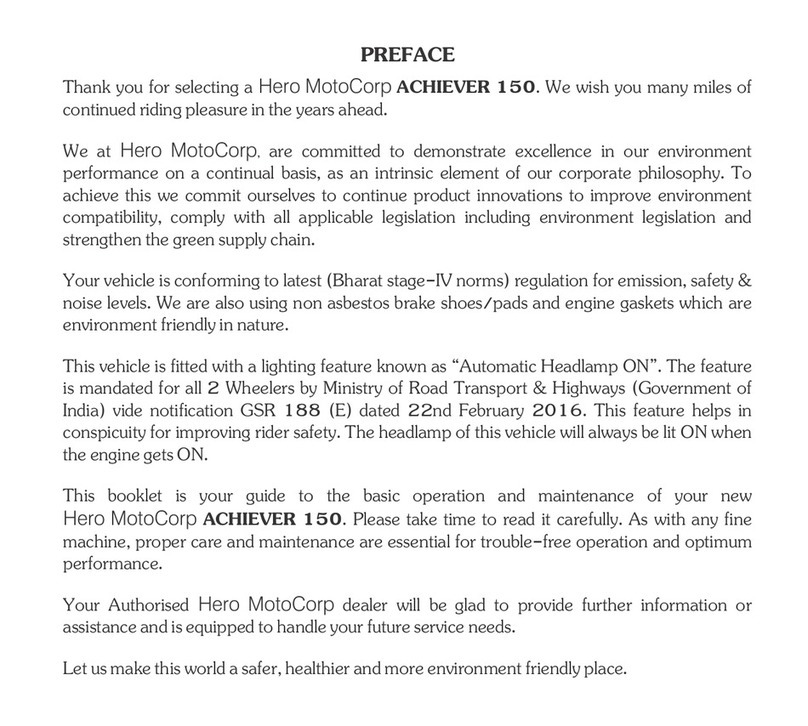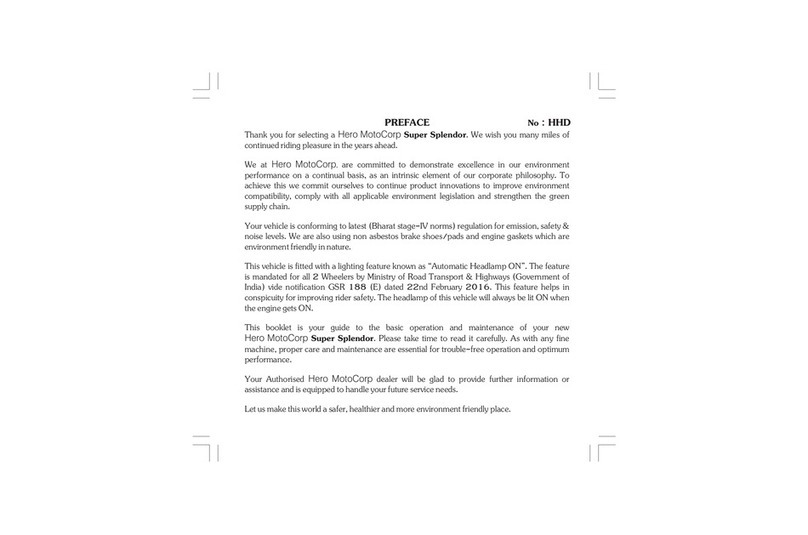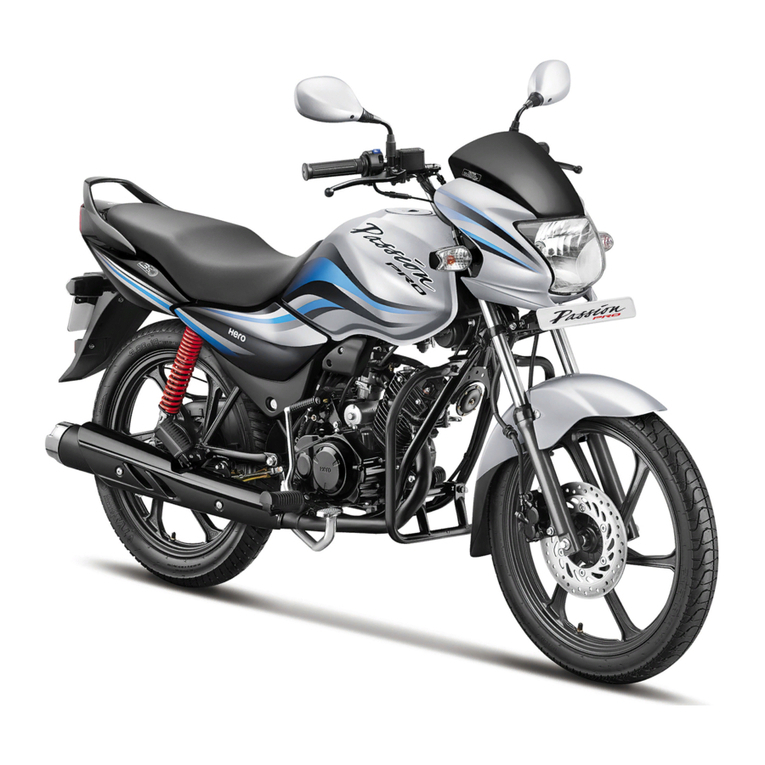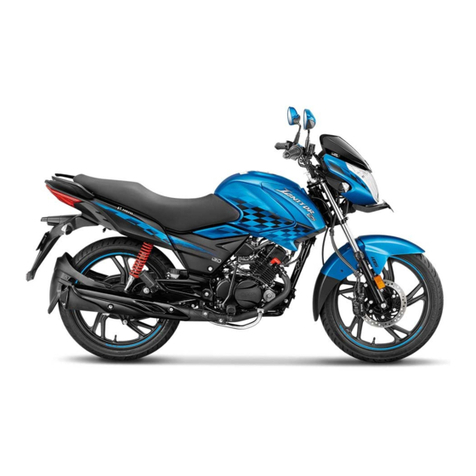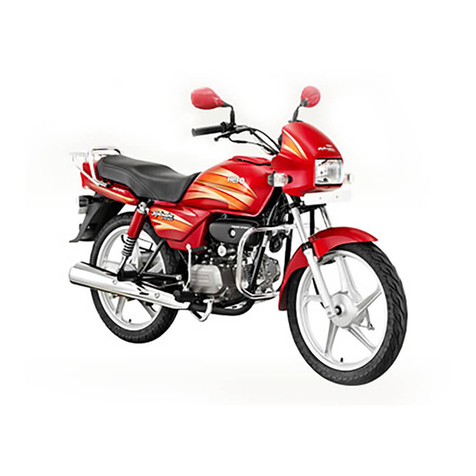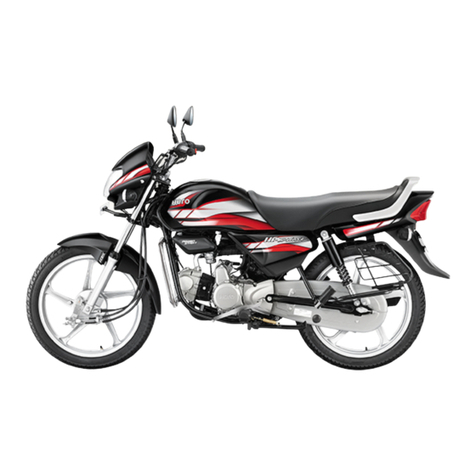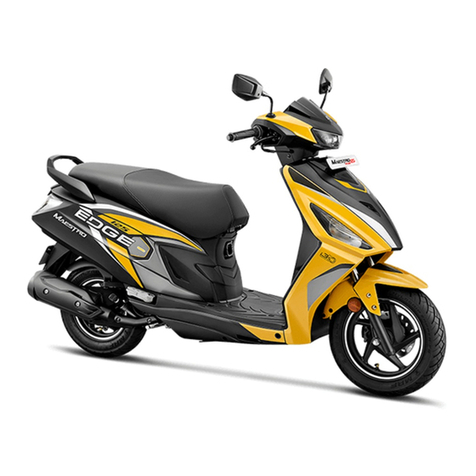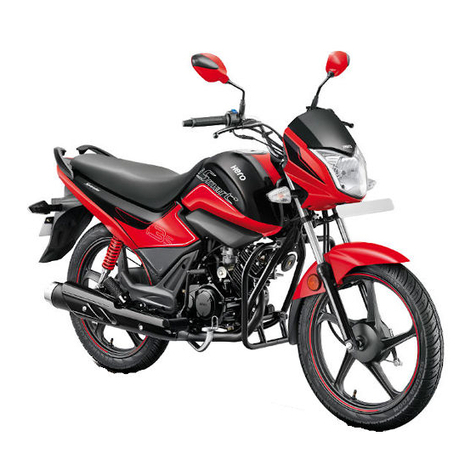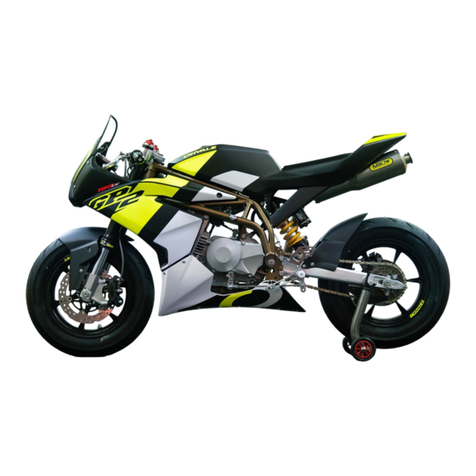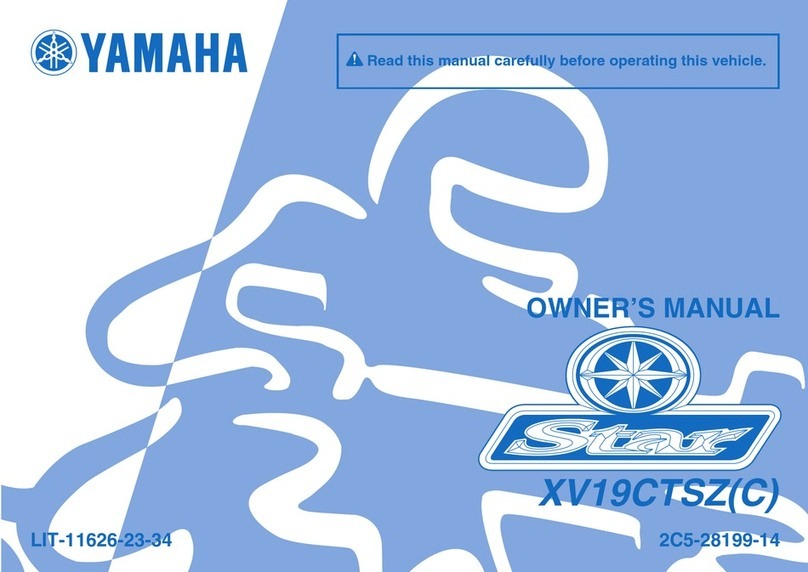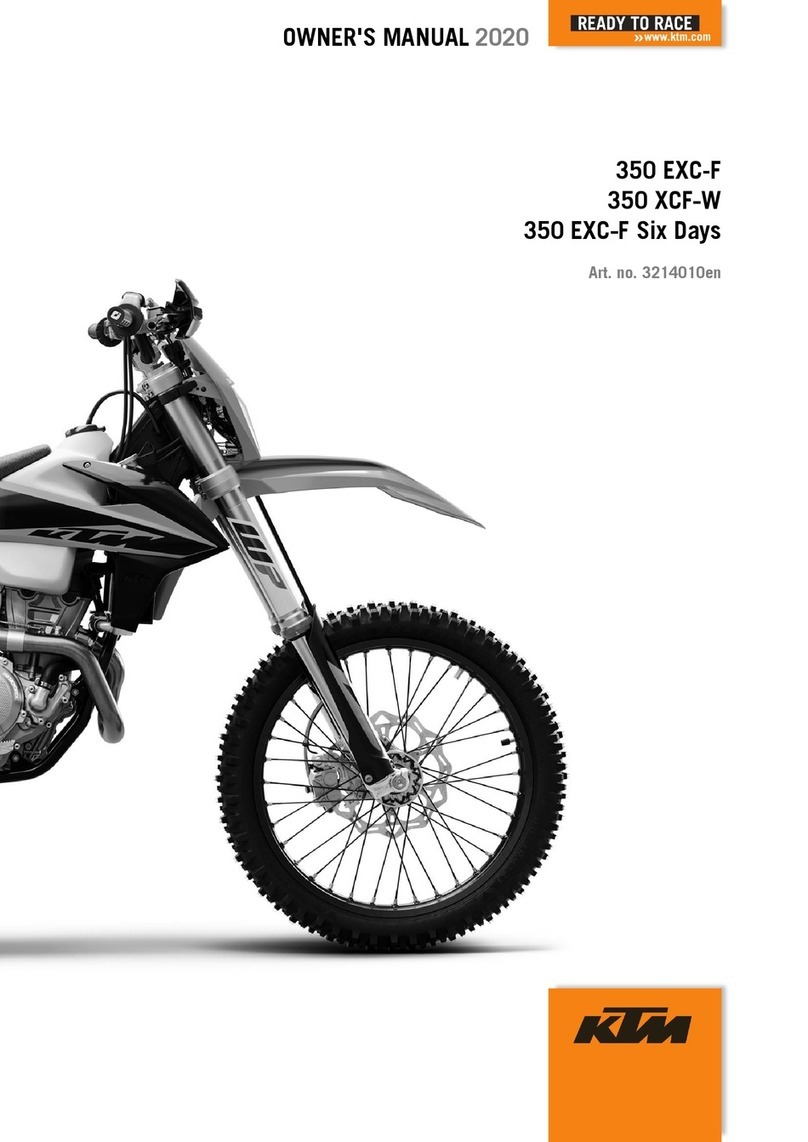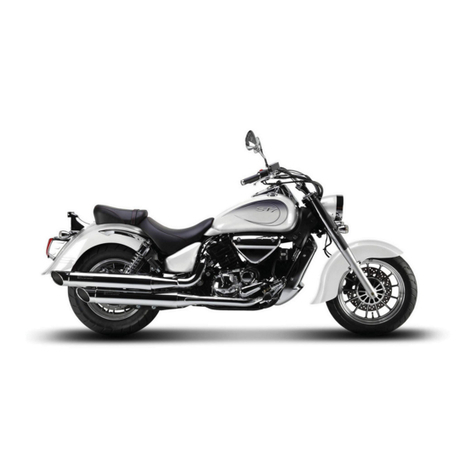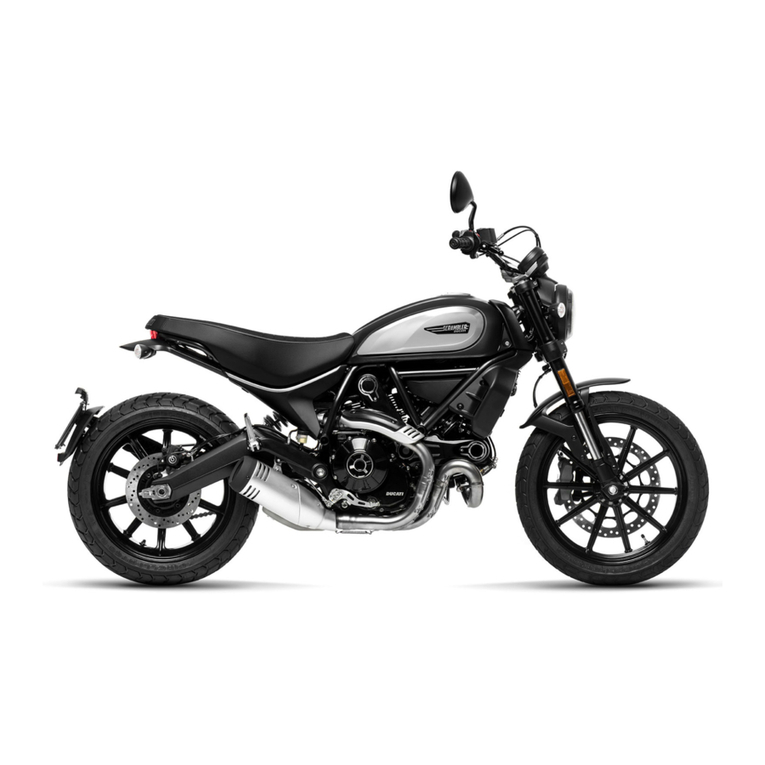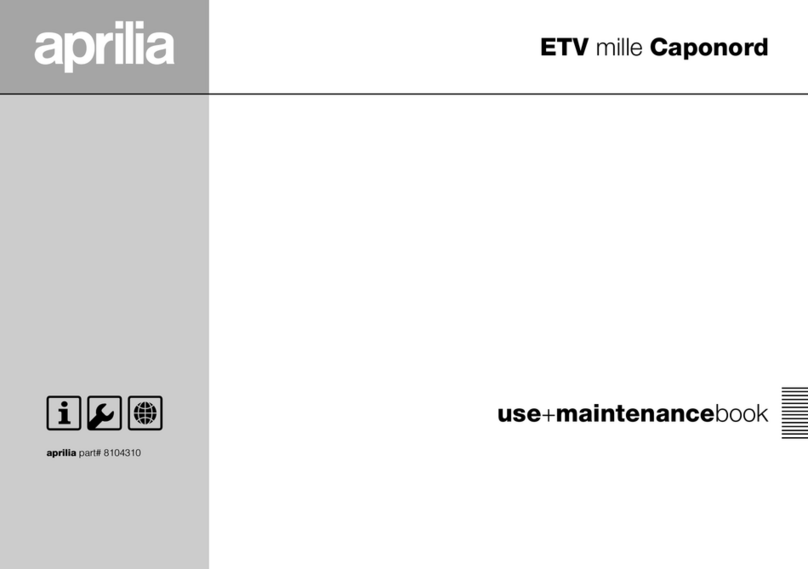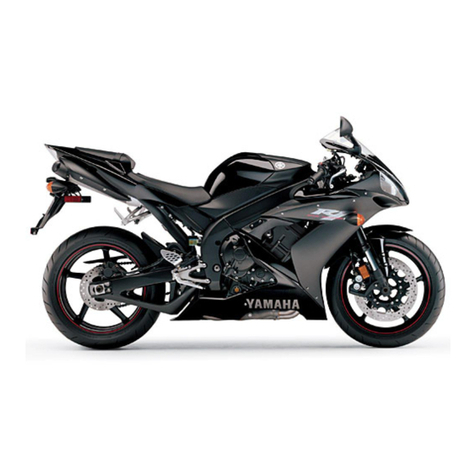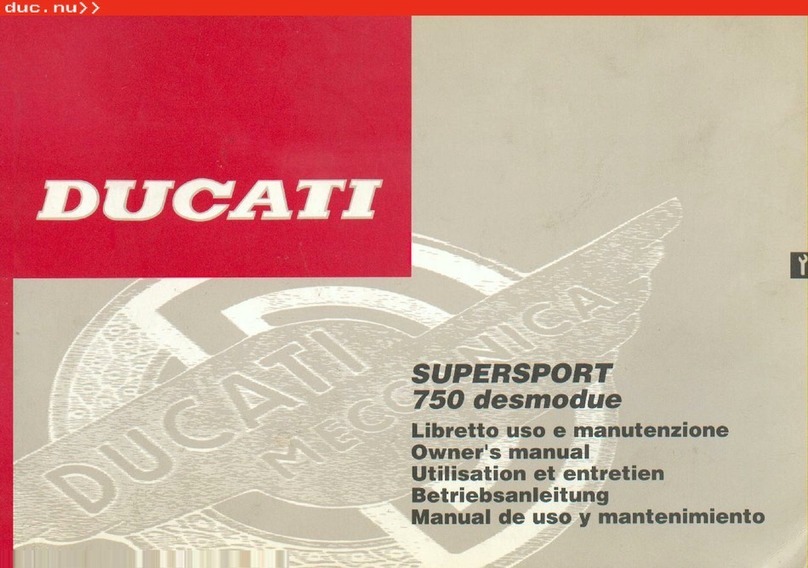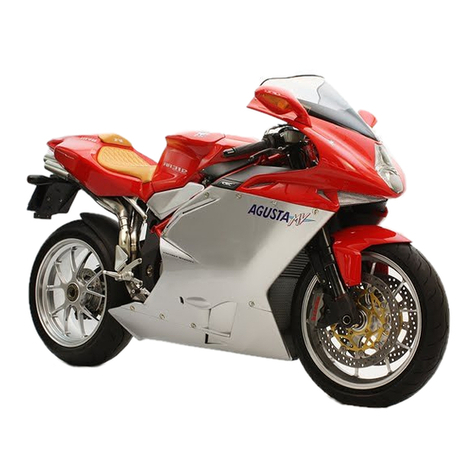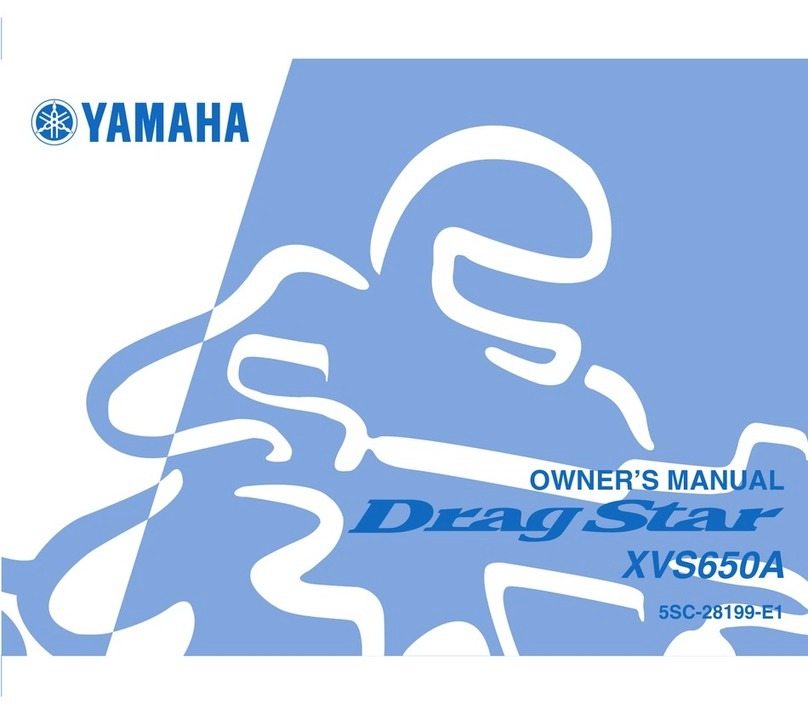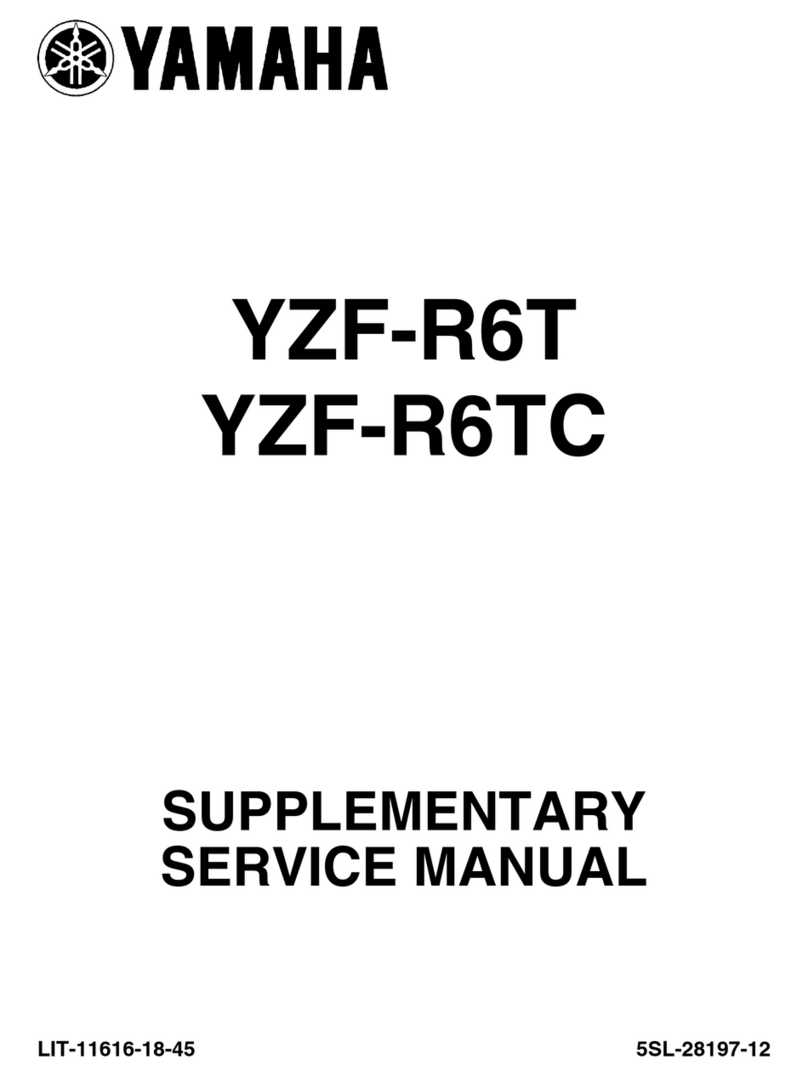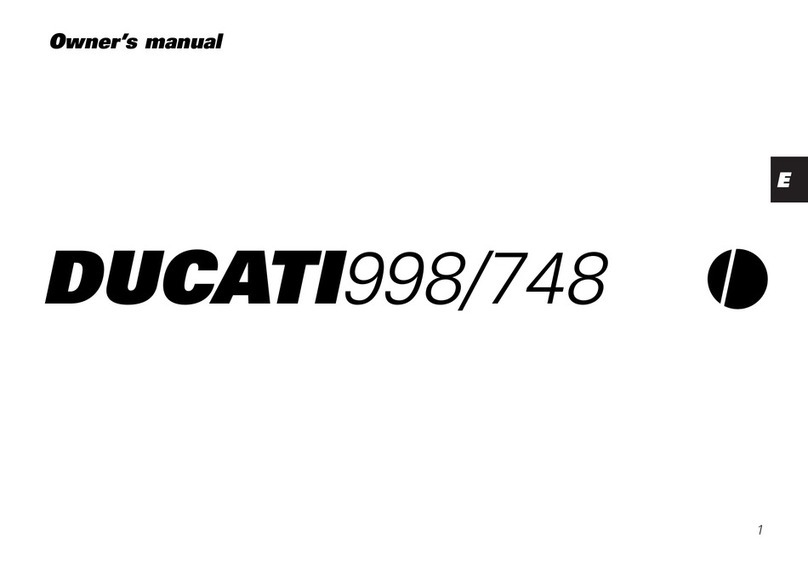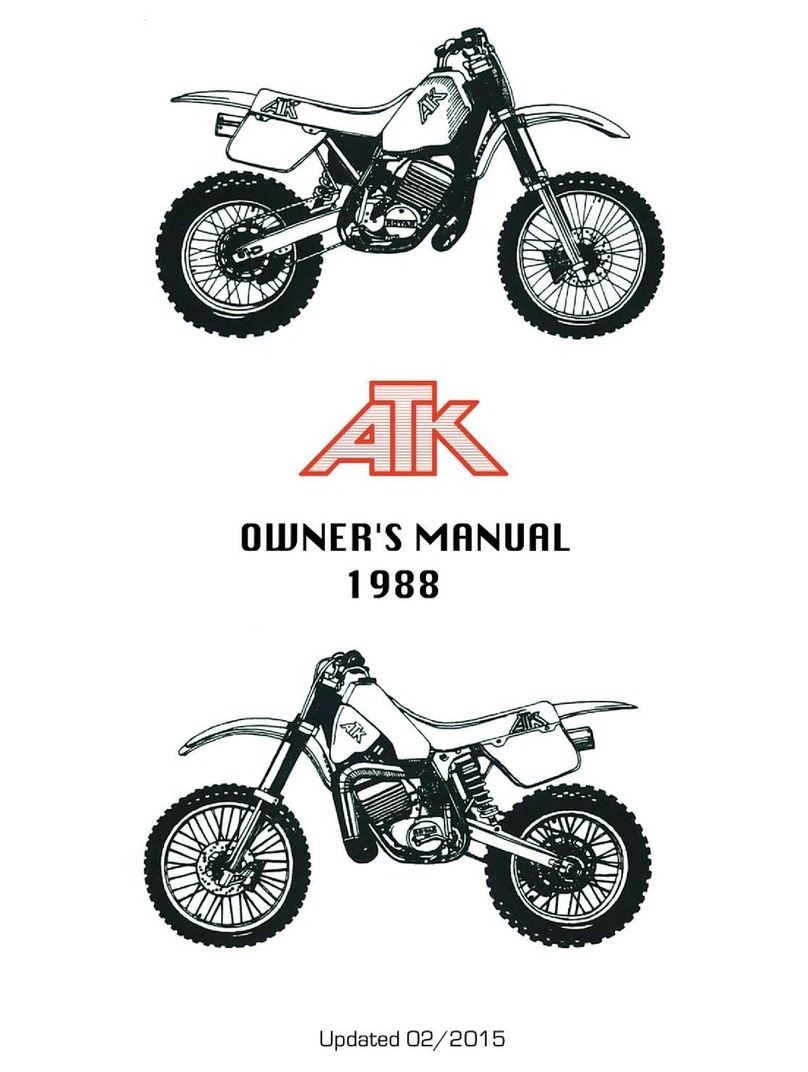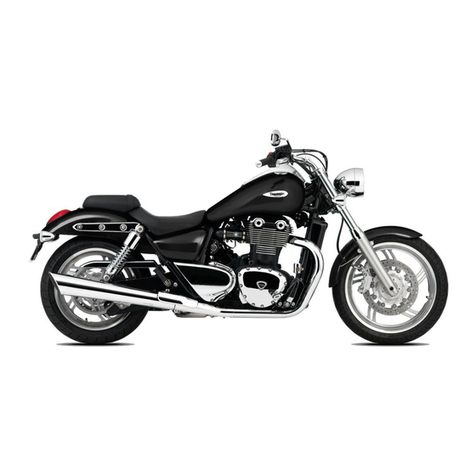
4
VEHICLE SAFETY
IMPORTANT SAFETY INFORMATION
Your vehicle can provide many years of
service and pleasure if you take responsibility
for your own safety and understand the
challenges you can meet on the road.
There is much that you can do to protect
yourself when you ride. You will find many
helpful recommendations through out this
manual. Following are a few that we consider
most important.
Always wear a helmet
It is a proven fact, helmet significantly reduces
the number and severity of head injuries. So
always wear a helmet and make sure your
pillion rider does the same. We also
recommend that you wear eye protection,
sturdy boots, gloves and other protective gear
(page 6).
Even if you have ridden other vehicles,
practice riding in a safe area to become
familiar with how this vehicle works and
handles, and to become accustomed to the
vehicle's size and weight.
Before riding your vehicle
Make sure that you are physically fit, mentally
focused and free of alcohol and drugs. Check
that you and your pillion are both wearing an
approved vehicle helmet and protective
apparel. Instruct your pillion on holding onto
the grab rail or your waist, leaning with you in
turns, and keeping their feet on the footrest,
even when the vehicle is stopped.
Take time to learn & practice your
vehicle
Ride defensively
Always pay due attention to other vehicles
around you, and do not assume that other
drivers see you. Be prepared to stop quickly or
perform an evasive maneuver.
Some drivers do not see vehicles because they
are not looking for them. To make yourself
more visible, wear bright reflective clothing,
position yourself so that others can see you,
signal before turning or changing lanes, and
use horn which will help others to notice you.
Make yourself easily visible
Ride within your limits
Pushing the limits is another major cause of
vehicle accidents. Never ride beyond your
personal abilities or faster than conditions
demand. Remember that fatigue and
negligence can significantly reduce your ability
to make good judgements and ride safely.
Riding under the influence of alcohol or drugs
is dangerous. Alcohol can reduce your ability
to respond to changing conditions and reduce
the reaction time. Do not drink and ride.
Keep your vehicle in safe condition
For safe riding, its important to inspect your
vehicle before every ride and perform all
recommended maintenance. Never exceed
load limits, and use accessories that have been
recommended by Hero MotoCorp for this
vehicle. See (page 7) for more details.
Do not drink and ride
